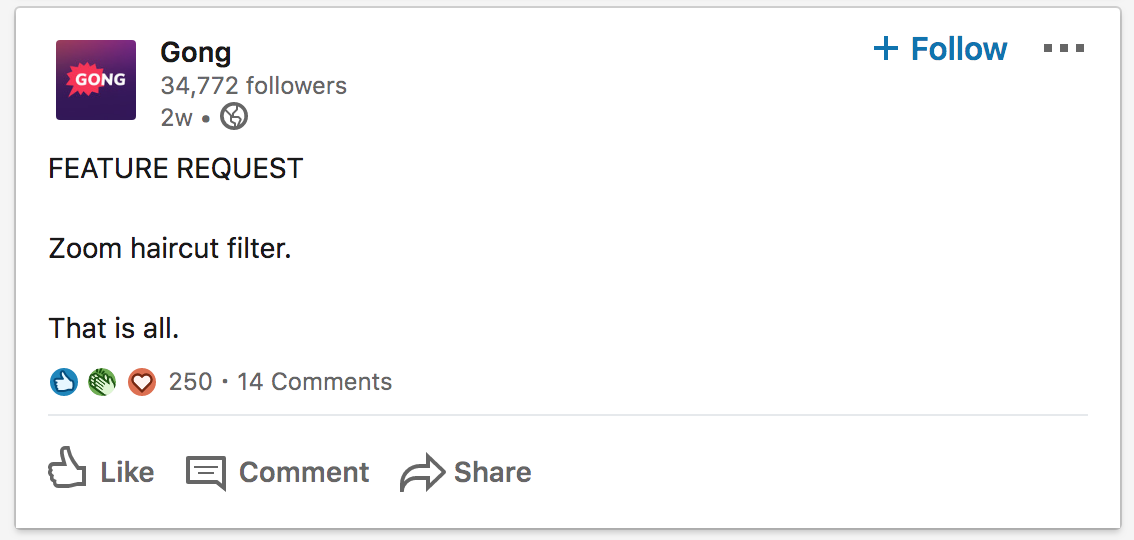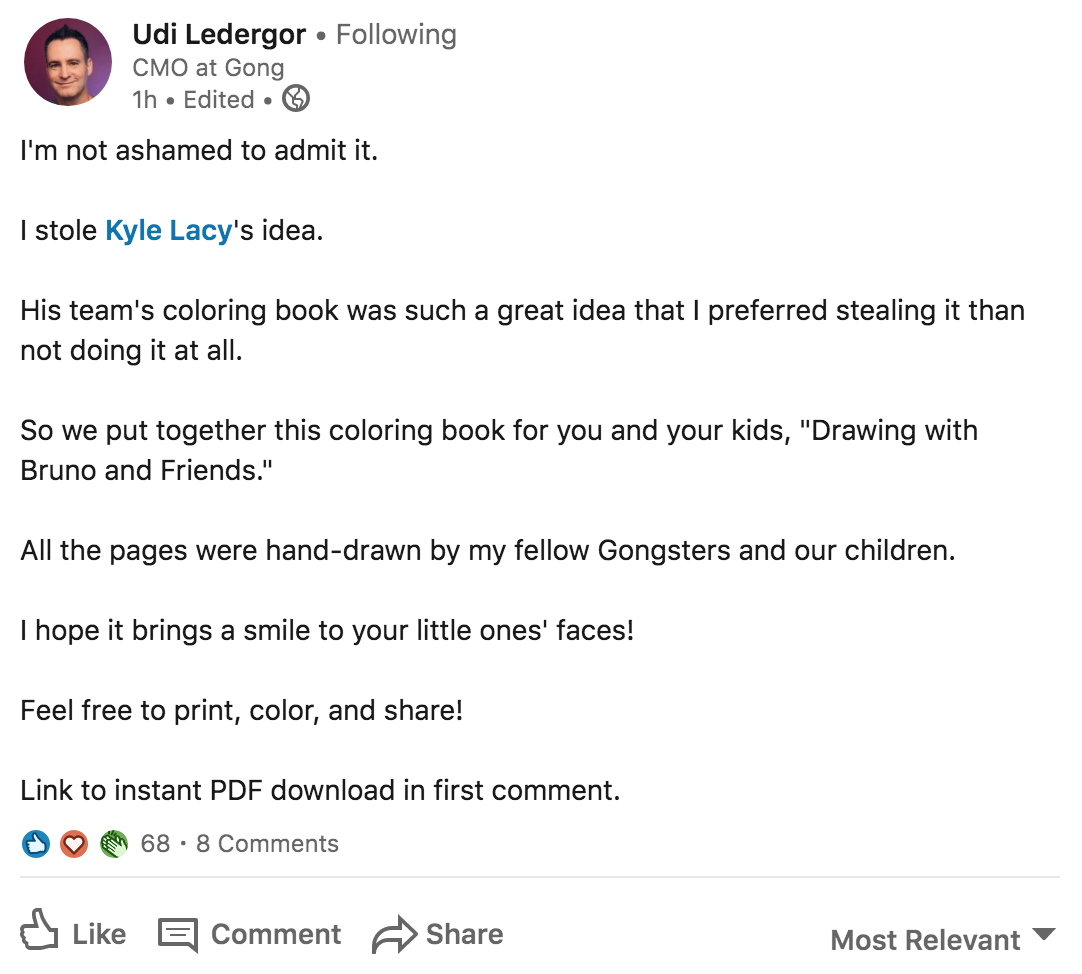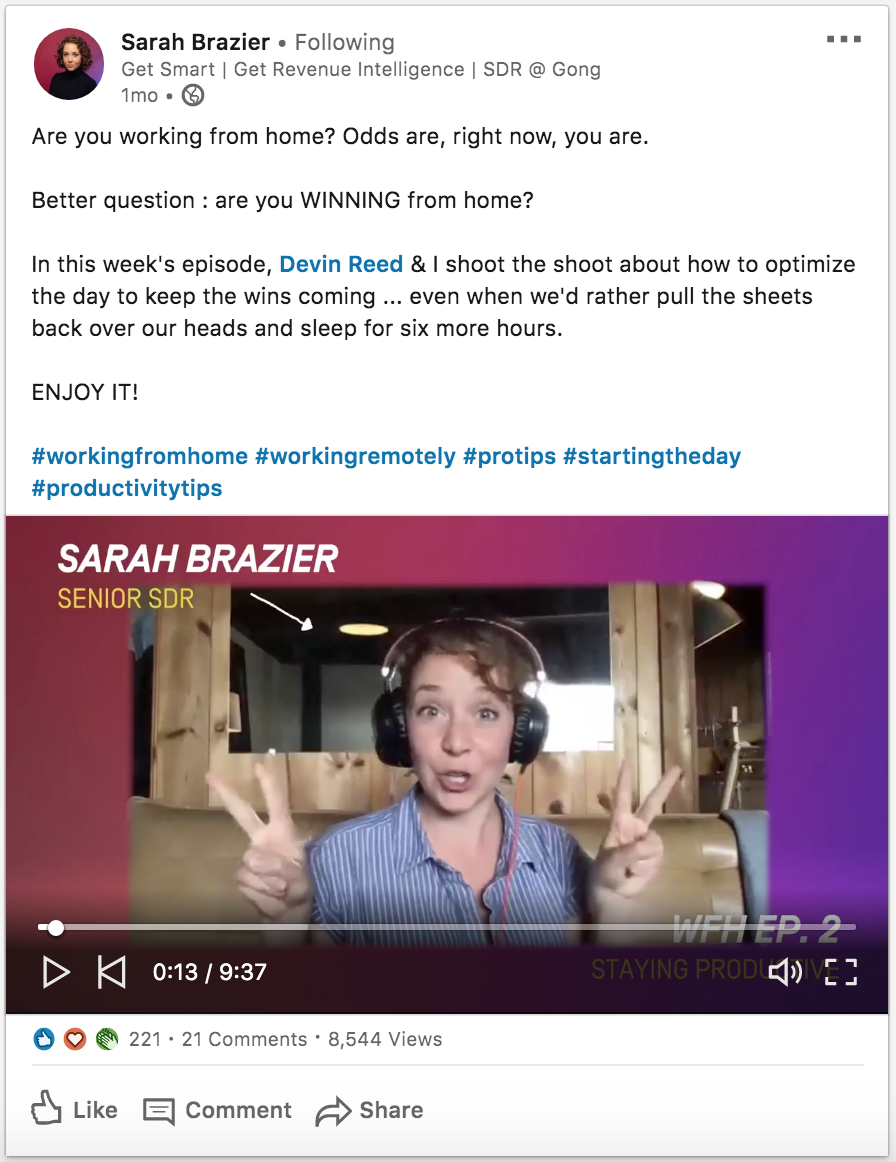Menu

Steve Jobs once said:
“Get closer than ever to your customers. So close, in fact, that you tell them what they need well before they realize it themselves.”
So I have a couple of questions.
When’s the last time you conducted voice of the customer (VoC) research?
Are you doing this research on a continual basis (at least once per year) to ensure that you’re understanding your customers and prospects and empathizing with them?
I mean TRULY empathizing with them.
Before you do anything major or minor (e.g. test marketing channels, build a marketing plan, create your content strategy, create/update your messaging) you need to conduct VoC research. This research will be key for creating your persona(s). And the personas will be an easy way to put together all the learnings so you can better understand and empathize with your target buyer.
Below are the 6 steps we’re going to cover so you can conduct VoC and build personas like a boss:
Step 1. Understand empathy. We’re going to spend some time here, folks. It’s gonna get real. Because this is my playbook. And this is important.
Step 2. Create your list of questions.
Step 3. Reach out to people.
Step 4. Conduct the interview.
Step 5. Create persona(s). Bonus: I’ve shared both a filled out and empty template below.
Step 6. Share with your team and plan out next steps together.
A bunch of the quotes I’m including here come from a book called The 7 Critical Principles of Effective Digital Marketing.
Let’s dive in!
“Empathy is the foundational principle on which all the other principles of digital marketing reside.”
Empathy is SO important.
It’s important to understand and believe this. This is a crucial step. This is what separates the truly remarkable companies from the so-so.
Back in the day (2009) I was helping a Columbia University professor conduct consumer behavior research at the local grocery store. We would set up tests inside the store (related to shopping carts, coupons, pricing, etc.) and track people’s purchase behaviors.
Sound creepy? Sure was! It was also fascinating.
Here are some of the things I learned from that experience and countless others as a marketer:
I know what you’re thinking. Marketers are trying to take advantage of people by using emotions and feelings! AH!
Some, maybe.
Most are not. Most people are working at places where they truly believe their product/service can help their customers and prospects. And if you’re a marketer and you’re not working in a place like that, your days are going to be long and hard.
Here’s where I’ll get a little mushy, but stay with me.
“The natural result of empathy is love. If you are truly working to empathize with the people you are marketing to, you should find yourself loving them...When you love someone, you want the best for them. If you truly feel that what you’re offering is of value, it’ll become easy for you to make that case.”
Aha! Note: People love making sense of the world and putting things into different categories. We learned how to do this in Kindergarten and it’s just how we think. So naturally, we like to separate B2B marketing vs. B2C marketing. There’s also B2P (business to person) marketing, and I believe they’re ALL one and the same (with some slight differences related to pricing, sales team, etc.). Why do I believe this?
During the pandemic, have you noticed any companies reaching out to you not as the company/brand, but as a real person from the company?
This is awesome!
Ann Handley mentioned The New York Times as an example. David Leonhardt, the newsletter's newly anointed writer, host and anchor, introduced himself in a recent NYT newsletter.
From Ann:
“If your business is to thrive in 2020, you've got to show your face. You've got to show up. Lead. Show people who you are. That's awkward for some bigger institutions accustomed to keeping their communications comfortably colorless and neutral—more brand, less character... It's not that we lack humanity or empathy. It's that we aren't used to leading with it.”
So we can see the problem. But how exactly do we lead with empathy?
From The 7 Critical Principles of Effective Digital Marketing:
“There’s a hunger in our world for real intimacy and experience. Brands need to be more human and authentic. They should stop trying to be perfect. Human-centric brands should treat customers as friends, becoming an integral part of their lifestyle. Brands should be more like humans. Approachable. Likable. Vulnerable.”
Case in point: Gong.
I never bought their product. I’m not trying to sell their product. I. Just. Love. Them.
Their people are approachable, likeable, and authentic across the organization. From the CMO to the SDR. There are some really likeable people there. So if I’m ever in conversation with someone around sales revenue intelligence (who knows?) I’ll bring up Gong. Imagine if I actually needed the solution they provide? Easy sell!
Exhibit A: Gong LinkedIn post

Exhibit B: Gong’s CMO LinkedIn post

Exhibit C: Gong’s SDR LinkedIn post

Approachable. Likeable. Vulnerable. Love ya guys.
Ok, phew, we covered empathy. Now let’s cut to the chase.
Here’s a great list of questions to ask customers, prospects, and even lapsed (ex) customers so you can learn more about who you’re not for.
Some tips:
The more people you interview, the better your data. I typically speak with 5-10 customers and prospects. Here is how my clients introduce me to customers:
“Anna (CC'd) is heading up our marketing efforts and improving our product/user experience and a very important part of that is talking to people like you to get a richer understanding of things like your goals and challenges at work, what’s a typical day like, etc. Are you available to talk to her for 45 min. within the next couple of weeks? If yes, I’ll let you two decide on a good time to speak.”
And don’t stop at sending one email, send a few emails to that person to increase your likelihood of getting a response.
Use Google Meets, Zoom. Record the video (if possible). During the interview, I like to take notes but if you're not into taking notes you can just get the transcript from the recording.
Some folks like to print interview docs and highlight key info (um, me!). Some like to enter the info into a spreadsheet across multiple people to find the patterns. Do what works best for you.
Aha! Note: It’s OK to make some educated guesses and assumptions based on what you know about the target audience. Test and revisit your assumptions later.
“In fact, part of your value as a marketer is going to be how good you get at [making educated guesses and assumptions].”
Some tips:
This is where you’ll want to bring your team in to be part of the process.
Remember that you’re continuously improving the information in your buyer personas (also adding/deleting personas) as you talk to more people, run more marketing campaigns, and gain more customers.
I’ll leave you with this quote from Jennifer Storms, CMO of NBC Sports Group (from the book Marketing Rebellion):
“The role of the CMO is to go out, listen, and understand so they can represent the customer to the rest of the company.”
Are you a VC funded startup that needs help with your marketing? Book a free 30 minute consultation. I’ll ask you some questions about your product, the problem it solves, your buyer, your marketing efforts, and your business goals. We’ll get to know each other. I’ll try to help you right away.
Top 5% podcast exploring the role that customers play in helping companies build to their next level of growth. 250+ episodes, 4.8 stars.
One Insight is a newsletter that highlights one unique insight I’ve uncovered, been thinking about, or seen in the wild. It usually makes me go "woah."